The liver is an unheralded organ, one not too many people talk about—but its importance can’t be overstated. You’d be full of waste, and devoid of nutrients, without one. That’s why knowing the signs of liver damage can be so important. Many of them come on well after the damage has been done. Read on for 8 life-saving tips about liver damage, straight from the experts at the CDC, Mayo Clinic and NIH—and to ensure your health and the health of others, don’t miss these Sure Signs You’ve Already Had COVID.
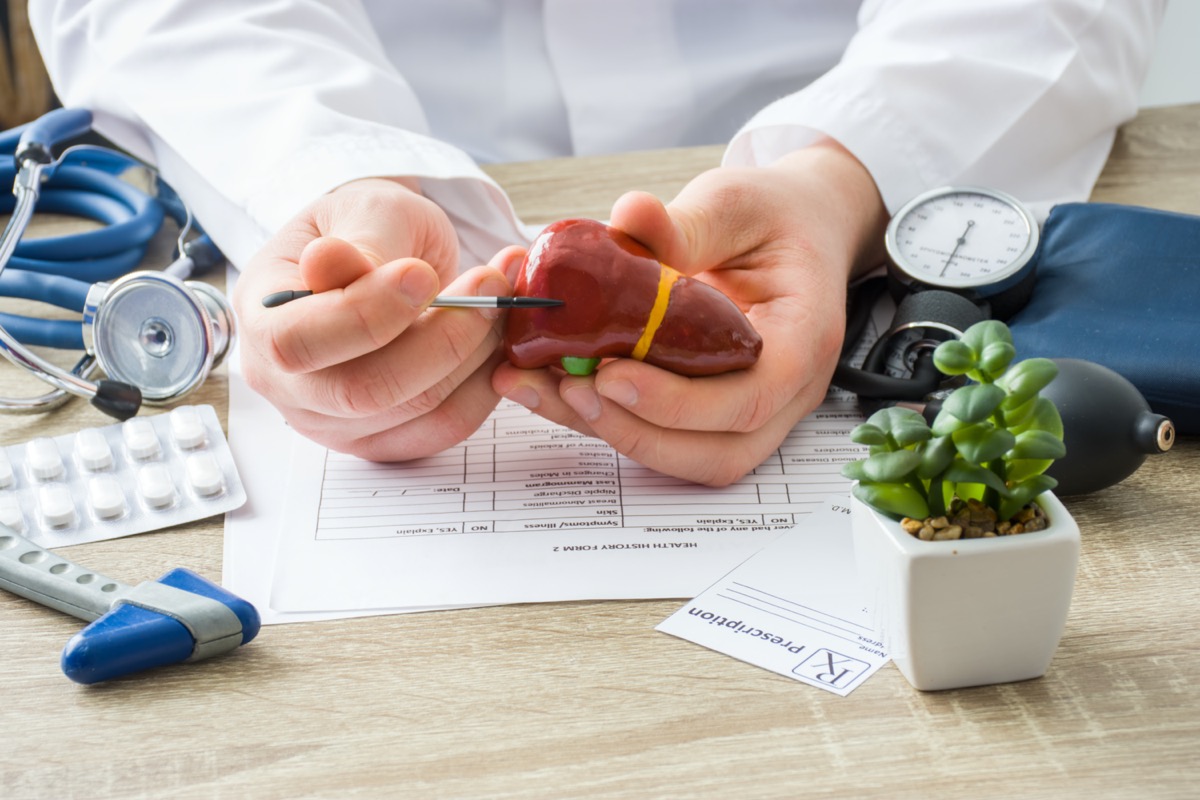

“The liver is one of the largest and most important organs in a person’s body. It is about the size of a football and weighs about 3 pounds in the average-sized person. The liver is located on the upper right side of a person’s body, behind the lower ribs. Almost all the blood in a person’s body passes through the liver. The liver performs hundreds of functions, including storing nutrients; removing waste products and worn-out cells from the blood; filtering and processing chemicals in food, alcohol and medications; and producing bile, a solution that helps digest fats and eliminate waste products,” says the CDC. Keep reading to see how you can tell if yours is damaged.
RELATED: Dr. Fauci Just Issued This Surprising Warning
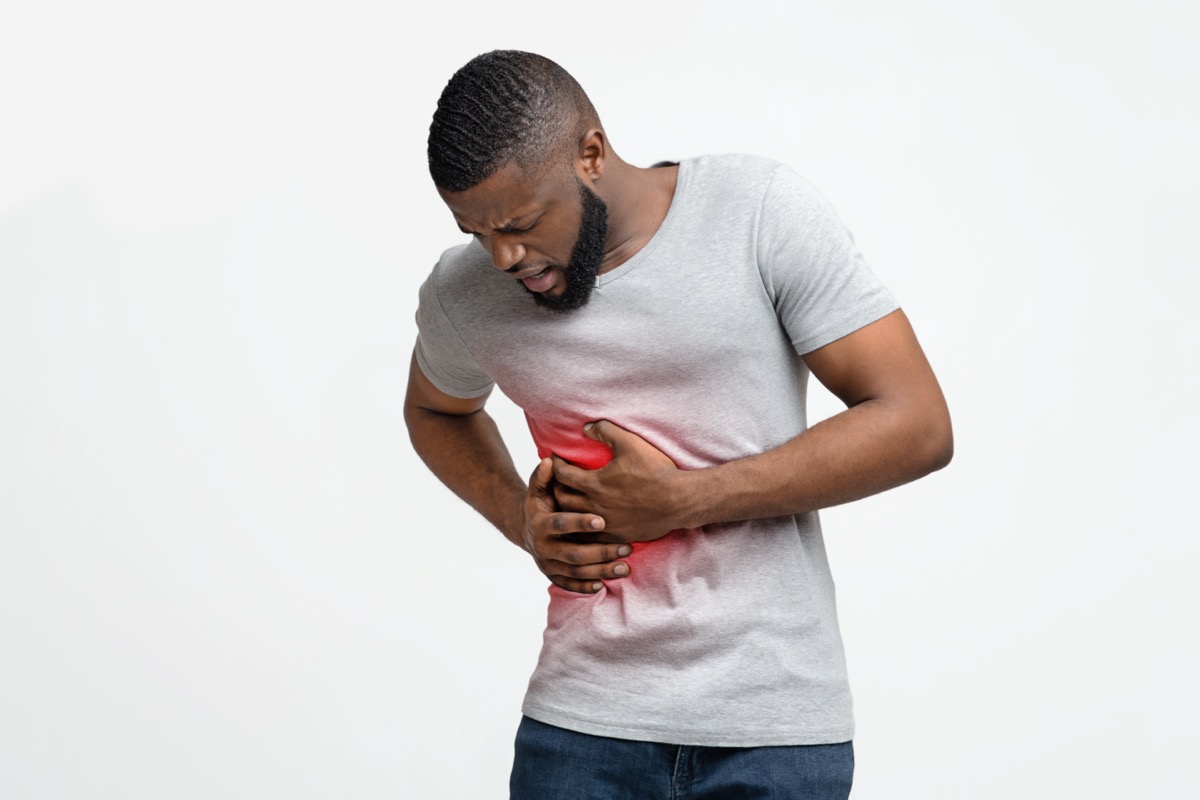

“Cirrhosis is a condition in which your liver is scarred and permanently damaged. Scar tissue replaces healthy liver tissue and prevents your liver from working normally. As cirrhosis gets worse, your liver begins to fail,” reports the NIH. “Causes include alcoholic liver disease, nonalcoholic fatty liver disease, chronic hepatitis C, and chronic hepatitis B.” What causes it? “Each time your liver is injured — whether by disease, excessive alcohol consumption or another cause — it tries to repair itself. In the process, scar tissue forms. As cirrhosis progresses, more and more scar tissue forms, making it difficult for the liver to function (decompensated cirrhosis). Advanced cirrhosis is life-threatening. The liver damage done by cirrhosis generally can’t be undone. But if liver cirrhosis is diagnosed early and the cause is treated, further damage can be limited and, rarely, reversed,” says the Mayo Clinic.
RELATED: Place With Top COVID Vaccine Rate in USA May Shock You


Symptoms of cirrhosis may not appear until your liver is very badly damaged, and may include fatigue and itchy skin. This itch might be localized or it might be all over. This may be due to your serotonin levels or your histamine levels or some other reason; doctors are unsure. You might also feel.
- Easily bleeding or bruising
- Loss of appetite
- Nausea
- Swelling in your legs, feet or ankles (edema)
- Weight loss
- Yellow discoloration in the skin and eyes (jaundice)
- Fluid accumulation in your abdomen (ascites)
- Spiderlike blood vessels on your skin
- Redness in the palms of the hands
- For women, absent or loss of periods not related to menopause
- For men, loss of sex drive, breast enlargement (gynecomastia) or testicular atrophy
- Confusion, drowsiness and slurred speech (hepatic encephalopathy)
Keep reading to learn if you may have liver cancer.
RELATED: Studies Show These are Proven Ways to Lose Visceral Fat
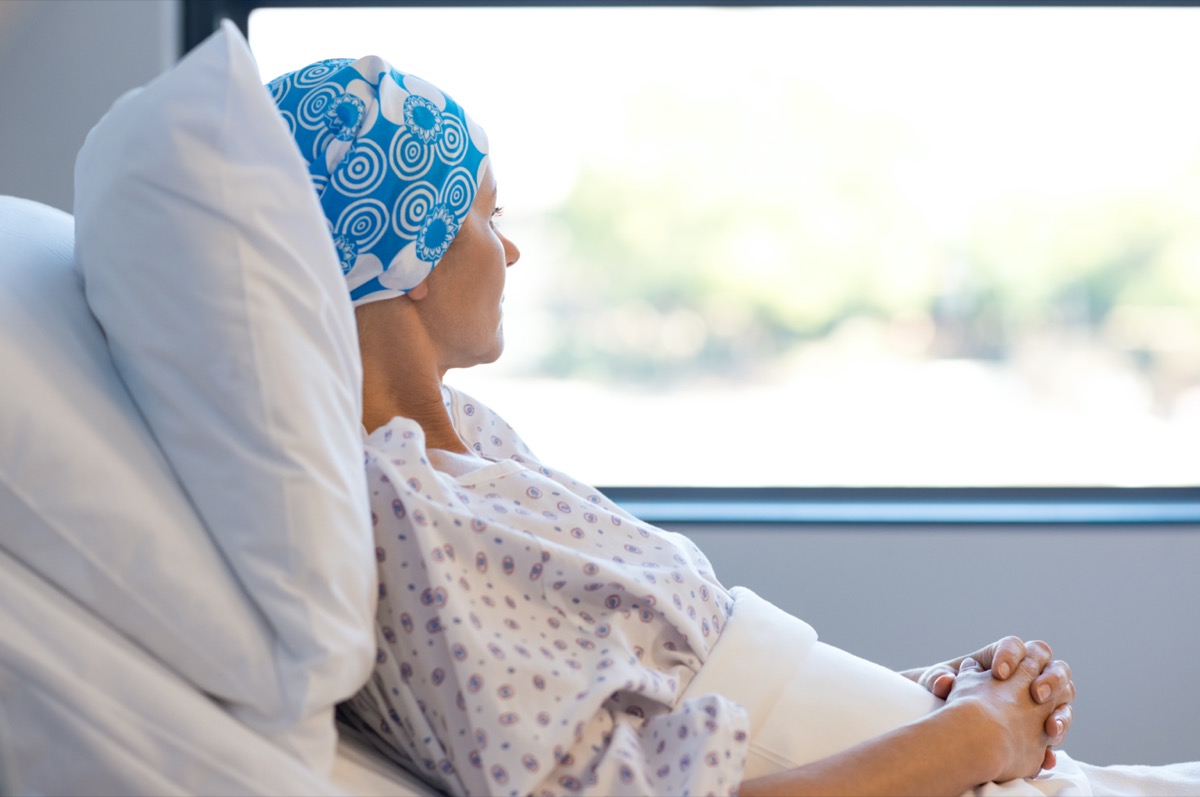

“Several types of cancer can form in the liver. The most common type of liver cancer is hepatocellular carcinoma, which begins in the main type of liver cell (hepatocyte). Other types of liver cancer, such as intrahepatic cholangiocarcinoma and hepatoblastoma, are much less common,” says the Mayo Clinic. “Cancer that spreads to the liver is more common than cancer that begins in the liver cells. Cancer that begins in another area of the body — such as the colon, lung or breast — and then spreads to the liver is called metastatic cancer rather than liver cancer. This type of cancer is named after the organ in which it began — such as metastatic colon cancer to describe cancer that begins in the colon and spreads to the liver.”
RELATED: Work in These States? You May Not Be Protected Enough From COVID, Says Government


“Most people don’t have signs and symptoms in the early stages of primary liver cancer,” says the Mayo Clinic. “When signs and symptoms do appear, they may include:
- Losing weight without trying
- Loss of appetite
- Upper abdominal pain
- Nausea and vomiting
- General weakness and fatigue
- Abdominal swelling
- Yellow discoloration of your skin and the whites of your eyes (jaundice)
- White, chalky stools”
RELATED: Surgeon General Says How to Avoid COVID Now
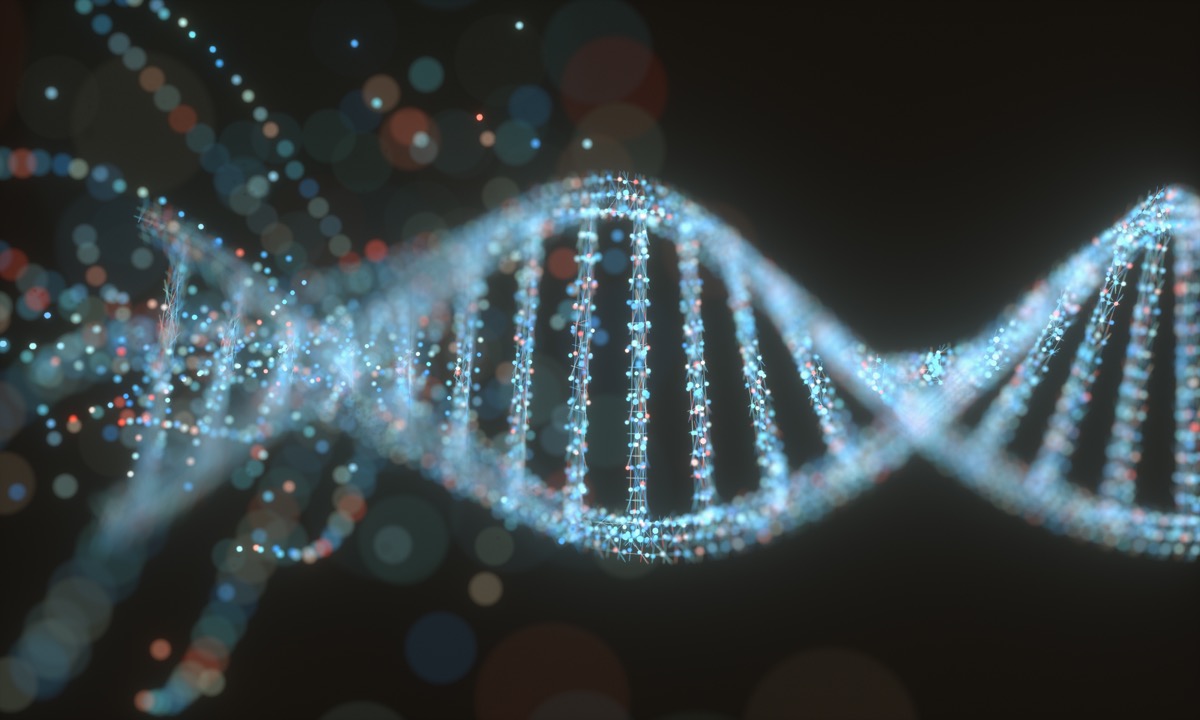

“Liver cancer happens when liver cells develop changes (mutations) in their DNA. A cell’s DNA is the material that provides instructions for every chemical process in your body. DNA mutations cause changes in these instructions. One result is that cells may begin to grow out of control and eventually form a tumor — a mass of cancerous cells,” says the Mayo Clinic. “Sometimes the cause of liver cancer is known, such as with chronic hepatitis infections. But sometimes liver cancer happens in people with no underlying diseases and it’s not clear what causes it.”
RELATED: Most People Catch COVID This Way, Studies Show
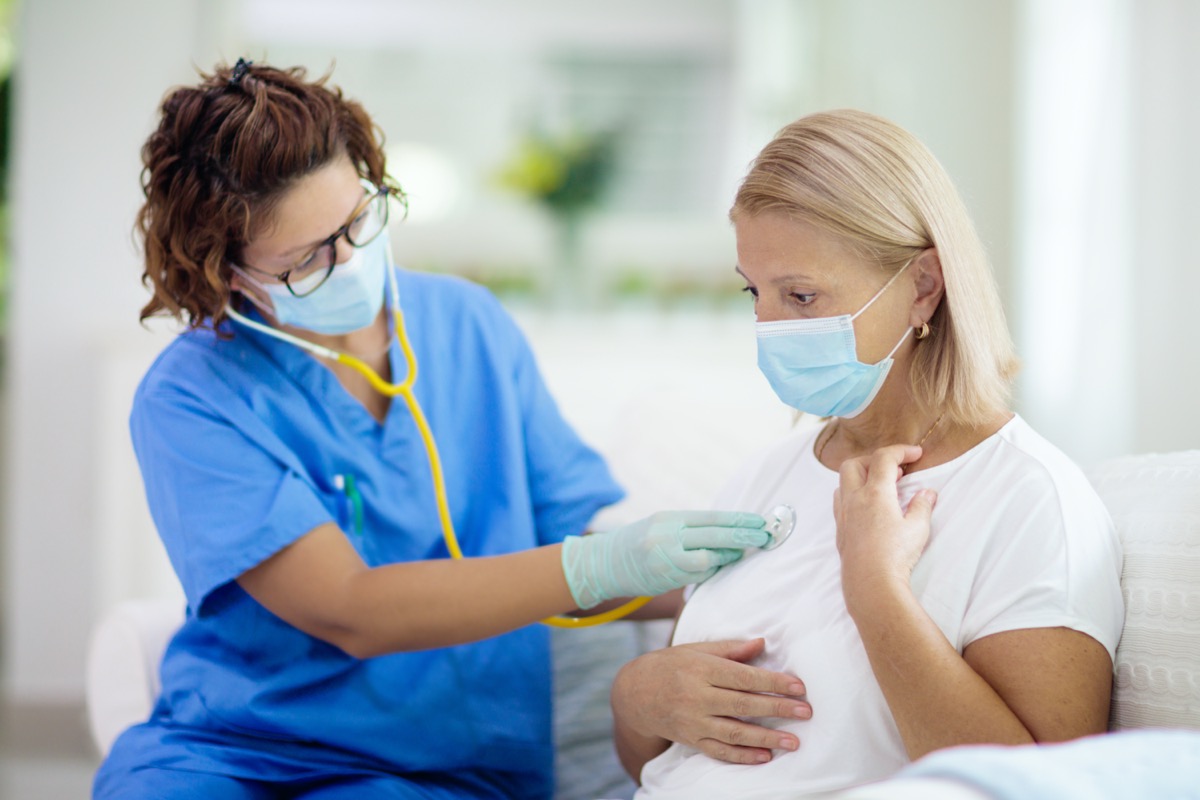

“Some patients hospitalized for COVID-19 have had increased levels of liver enzymes — such as alanine aminotransferase (ALT) and aspartate aminotransferase (AST). Increased levels of liver enzymes can mean that a person’s liver is at least temporarily damaged. People with cirrhosis [liver scarring] may be at increased risk of COVID-19,” says the CDC. “Some studies have shown that people with pre-existing liver disease (chronic liver disease, cirrhosis, or related complications) who were diagnosed with COVID-19 are at higher risk of death than people without pre-existing liver disease.”
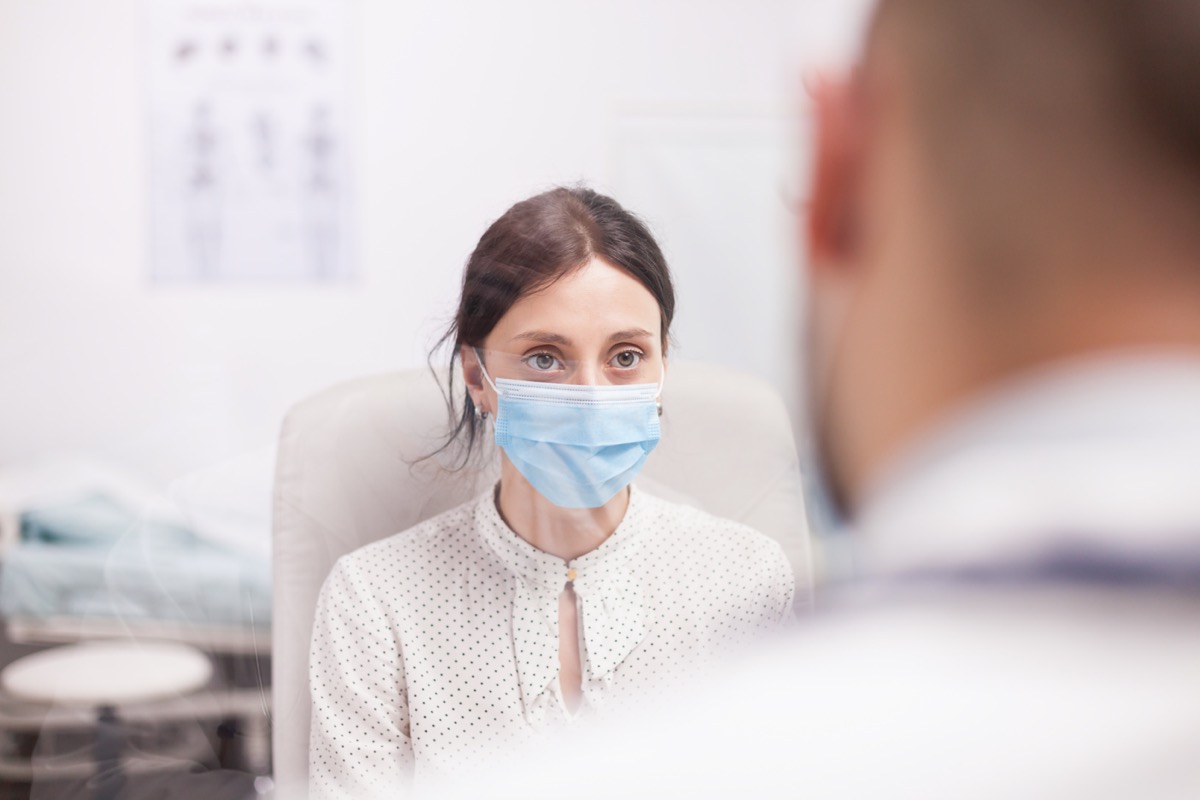

“Make an appointment with your doctor if you experience any signs or symptoms that worry you,” advises the Mayo Clinic. And to protect your life and the lives of others, don’t visit any of these 35 Places You’re Most Likely to Catch COVID.